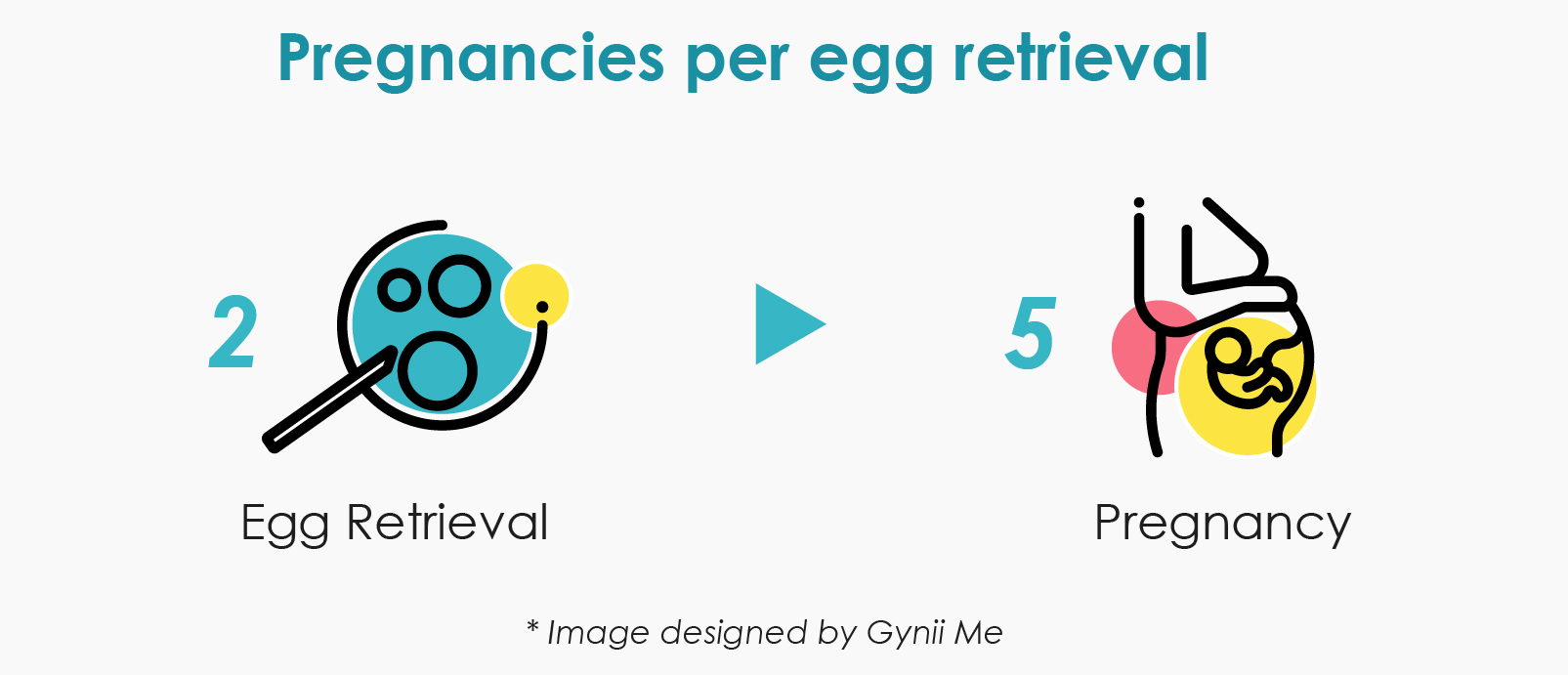
Becoming familiar with the way success rate statistics work can be tricky and also rather daunting. Looking at some simple examples of success rate and how they are derived, helps you to understand how to interpret the results presented by a fertility clinic.

This data tells you how many hormone stimulation cycles went on to result in a pregnancy.
*Also referred to as “pregnancies per treatment cycle commenced” or, “pregnancies per treatment cycle started”.

This data tells you how many hormone stimulation cycles went on to result in a live birth (of one or more babies).
*Also referred to as “live births per treatment cycle commenced” or, “live births per treatment cycle started”.

This tells you how many egg retrieval cycles went on to result in a pregnancy.

This tells you how many egg retrieval cycles went on to result in a live birth (of one or more babies).

This figure relates to the number of embryos transferred, which progressed to a pregnancy.

This figure relates the number of embryos transferred to the resulting number of live births.
A fertility journey – simple example
In practice, the fertility journey taken depends the medical and fertility history of the patient.

“Cumulative success rate” – what does this mean?
You may see “cumulative”data quoted sometimes, when looking at a fertility clinic’s success rates.
Cumulative success rates are based on an overall perspective. For example, “the cumulative pregnancy rate per treatment cycle” would include the number of pregnancies resulting from both initial fresh embryo transfers plus pregnancies occurring from the frozen (then thawed) embryo transfers.

Why do success rates vary from clinic to clinic?
It’s extremely difficult to compare clinic success rates fairly. This is because success rates depend on the patients being treated and the reason for their infertility.
Some clinics specialise in treating people with certain types of infertility or older women who are less likely to be successful. Taking on these trickier cases will affect their success rates. Their outcomes may not reflect the national average.
That’s why we recommend you consider all the issues that matter to you – from opening hours and location, to whether counselling is provided – when choosing a clinic and not rely solely on the success data.
See choosing a fertility clinic for to what to look for when selecting a clinic.
Success rates and your chance of pregnancy
The success rates presented on Gynii Me’s web site and other web sites are based on an average calculated from the outcomes from a large number of patients. What is presented is intended to give you a reasonable view of each clinic’s performance. Your individual chance of success should be discussed with your GP or fertility specialist.
Continue to read How is “success” defined?
If you have any questions on fertility success rates, please email us at support@littlebeanjourney.com















